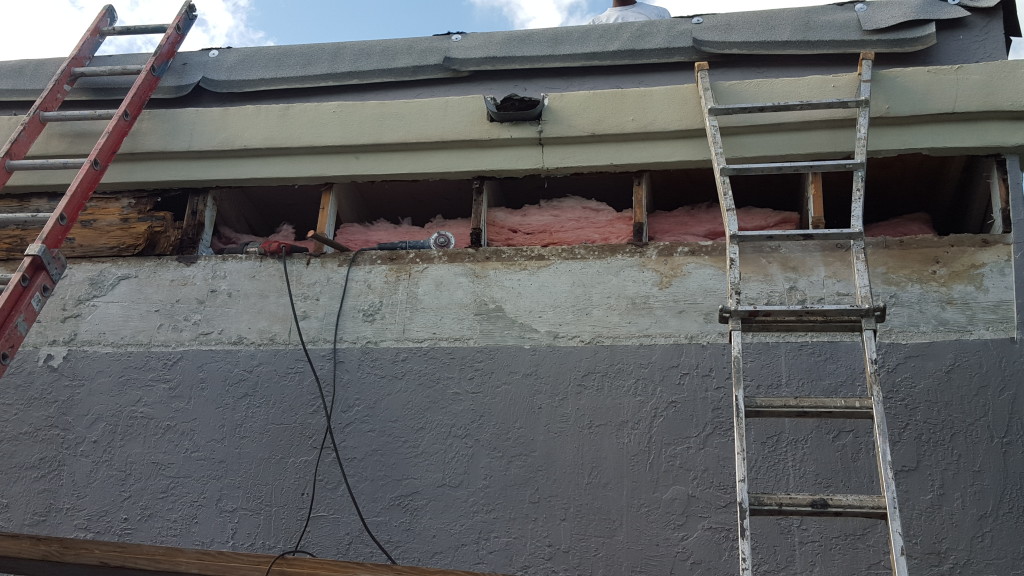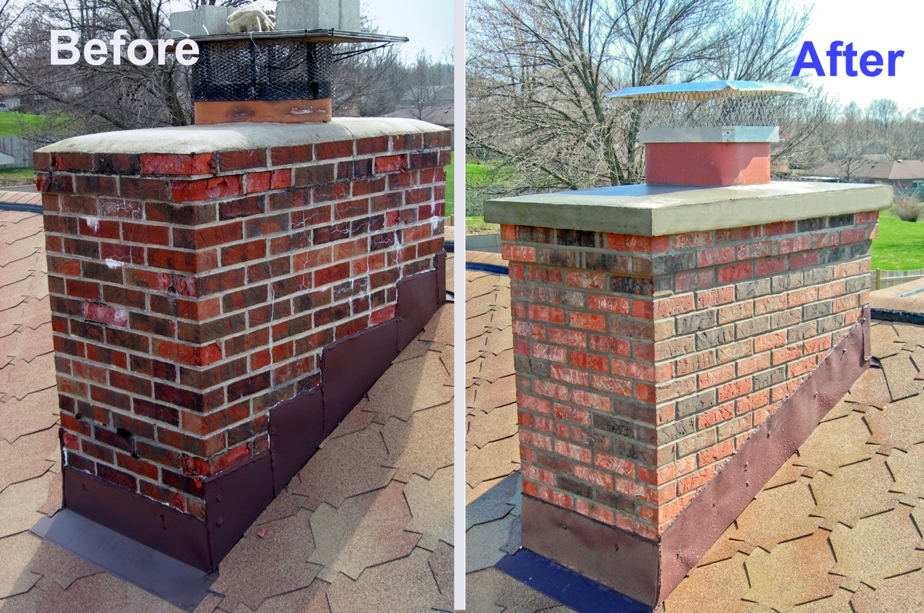Mistakes You Should Avoid When Reroofing
Don’t invest in a new roof only to discover that most of the old leaks are still leaking
By Dick Fricklas
REROOFING CAN MEAN an end to a series of frustrating leaks and contractor callbacks. Or it can be a frustrating and costly time period. The difference is proper planning for the complexities of the reroofing project.
One way to start a reroofing project is to contact a roofing contractor hopefully one that you have confidence in or that comes highly recommended. However, complications should be anticipated.
Can you be certain that reroofing will solve the leakage problems? Most leaks are related to flashing and rooftop penetrations. Will the new roof system correct these situations? It is not impossible to spend $5 a square foot for a new roof only to discover that 90 percent of the previous leaks are still leaking.
One place to start with that in mind is to remove as much equipment from the roof as possible. Obsolete stacks, gas lines and other penetrations that cannot be removed should be rebuilt using “umbrella” sleeves rather than “pitch pockets,” which require periodic refilling.
Curbs must rise at least 8-12 inches above the roof plane, so if insulation will be added during the reroof, all equipment should be raised and the curbs rebuilt. In addition, “crickets” or diverters should be constructed so that water flows away from flashings, never against them.
Will the roof meet code?
Another early consideration will be code compliance. Has the building code been checked lately? At the time of reroofing, a roof system must be upgraded to meet the current issue of the code. For example, when a roof drains to the interior, rather than over an edge, a secondary “overflow” drain is now required. This recommendation comes from ASCE/ANSI 7-95, which says that a roof must be designed as if all primary drains were blocked.
Water weighs 5.2 lbs. per sq. ft. per inch of depth; imagine your roof with water up to the parapet height. The overflow drains now mandated typically will be installed with their intake 2 to 4 inches above the primary roof drain, limiting the roof load to 10 to 20 lbs. per sq. ft. Since the primary drain line could be blocked or restricted, the code requires the overflow drains to be connected to an independent drain line. This overflow line might dump water into the parking lot or other safety-valve location.
Another code concern is the limit on the number of roof systems already in place. Depending on your local code, you are limited to one re-cover (or two). Roof cuts all the way down to the deck may be necessary to discover how many systems are already in place.
Powerful moisture detection tools are available from survey specialists. These might be based upon infared, nuclear backscatter or electrical impedance technologies, but all are capable of finding wet insulation. Since all major building codes prohibit installing a new roof cover over wet insulation, this is an important, but often overlooked consideration. Roof cuts will validate the moisture surveys and determine whether the old insulation is water-soaked or deteriorated.
Another important consideration is whether the old roof system or flashing contains asbestos. If so, the contractor will require a “competent person” to oversee removal, to ensure the Occupational Safety and Health Association, Environmental Protection Agency and local requirements are met. It probably will not require a separate abatement contractor as long as the asbestos isn’t friable, and the roofing contractor uses removal techniques that will keep it that way.
Another issue to consider is the thermal efficiency of the roof. An energy bill was authorized by Congress in 1992, and is now in the process of being implemented. This bill is patterned after ASHRAE publications 90.1 (commercial) and 90.2 (low-rise residential) and considers both heating and cooling requirements. Every state is required to upgrade their codes to meet these requirements. Roof insulation can have a quick payback, making it an excellent candidate for capital investment. Tapered insulation can also be used to achieve positive slope to drain. Ponding is one of the major causes of roof failure and leakage, and there’s no better time to take care of it than during a reroof.
Finding the right reroofing system
The contractor or consultant will suggest a careful evaluation of the existing roof system. Recommendations will include wet insulation removal and buildup of all flashings. If the old system was bitumen-based (a built-up roof), one possible recommendation might be to prepare the old membrane surface removing aggregate, deflating blisters, etc. and then spot attaching a new base sheet, followed by one of the newer, polymer-modified cap sheets.
This is acceptable roofing practice, but does this re-cover meet the local fire code? The contractor may cite manufacturers’ literature, which says the new system can meet Class A or B, but that listing very likely was for a new roof. Underwriters Laboratories (UL) has a special classification called “Maintenance and Repair” in its Roofing Materials and Systems Directory, which is specifically designed to address a re-cover. It is very specific as to the amount and type of thermal insulation that can be added, and also the type and nature of the composite roof system that has just been created. In addition the odds are that the modified bituminous top sheet will need to be the FR (fire retardant) grade, not the “standard grade” that the contractor quoted. Require that the contractor submit proof (preferably directly out of the UL book) that his proposed system does meet local fire codes.
Have you been given the contractor’s best recommendation? Perhaps, but only if you have provided some fundamental information. Do you intend to keep this building for the long term? Since the Tax Reform Act of 1986, a capitalized roof system can only be depreciated straight line over 31.5 years. Therefore, is a “10 year roof” right for your situation?
Since so much is being spent on demolition and renovation, would the choice of a “better” roof be justified? One possibility might be to upgrade the proposed base and cap modified system to a “hybrid” system, with a base sheet followed by a couple of glass fiber ply felts installed in hot asphalt, prior to the application of the modified cap sheet. The incremental cost of this upgrade, on a life-cycle basis, would be minimal.
The bidding process
Should you put the job out for bid, or stay with the one contractor that has been so helpful during the patching phase of your roof? The answer may lie in your need to ask the question in the first place. If a contractor has been carefully selected some time in the past and that single contractor has provided quality service, why question that relationship by seeking low bids now?
After the contract is signed, an additional step toward quality installation would be for the owner to hire an independent quality observer. This will only work if the inspector you have hired is knowledgeable and cooperative. Adversarial roles must be avoided.
Not only should the reroofing price be negotiated, but a maintenance contract on the new roof should be negotiated as well. You should expect your contractor to furnish a two-year warranty on workmanship as part of the reroof contract, at no additional cost to the owner. However, starting in the third year, under the maintenance agreement, the contractor should furnish a visual survey twice a year. A stipulated number of man-hours of cleanup and service should be provided and, when necessary, more extensive repairs should be done on a pre-negotiated time and material basis.
Don’t shop warranties
The subject of roofing warranties is controversial, and it is sometimes said that “warranties aren’t worth the paper they’re written on.” In reality, there may be a few that bad, but fortunately they are the exception, rather than the rule. What’s really important is to be able to identify what your requirements are. The best warranty need not be the longest, as length has very little relationship to the longevity of the roof system.
What do you really want? Exclusions should be limited and unambiguous. These would normally include unauthorized alterations to the roof and roof abuse such as from falling objects. Ambiguities such as “failure to use reasonable care” or “excludes gale force winds” are unacceptable. According to the Beaufort Scale, a gale could be 39 mph, far too low to be useful.
Make sure that the re-cover that you were planning is warrantable. Many manufacturers will offer their top-of-the-line “no dollar limit” warranty only on new materials, installed from the deck up.
A powerful tool is available to compare warranties from competing manufacturers. The National Roofing Contractors Association publishes an annual “Commercial Roofing Materials Guide,” which contains a comprehensive analysis of 27 different aspects of warranties. There is no other way to make comparisons so quickly and efficiently.
Of all the problems with warranties, the biggest is failure to read the warranty. If you are too busy or inexperienced, have your attorney analyze it for you. Require a submittal of a specimen warranty before you sign any contract. If you don’t read it now, there may be many lawyers reading it later.
What is the payoff of all these efforts? Hopefully, a reroof of your building that goes as smoothly as possible (recognizing that it entails construction activity on an occupied building). This roof should be energy efficient and maintainable, with adequate drainage that will justify your life-cycle analysis. You should come away with established a long term, mutually beneficial business relationship with a local contractor, one who can respond promptly when needed. Above all, your occupants will be dry, unperturbed and unaware that such a conscientious effort has been made on their behalf.
Dick Fricklas is the Technical Director Emeritus of The Roofing Industry Educational Institute, based in Denver. He is co-author of The Manual of Low Slope Roofing Systems.











